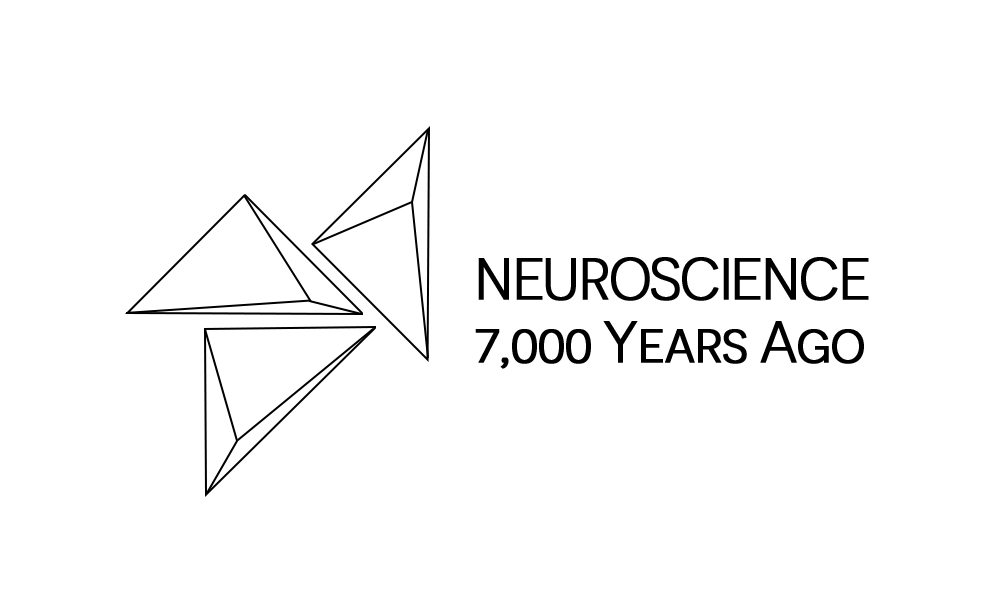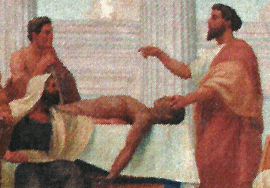
Documenting Neurological and Mental Disorder During Greeks Antiquity
Hippocrates and his followers were convinced that the brain is the major controlling center for the body. This belief marked a major change in thinking from Egyptian, biblical, and earlier Greek views, which were based on the ruling heart.
The newly elevated role of the brain is best illustrated in the following passage:
“Men ought to know that from nothing else but the brain come joys, delights, laughter and sports, and sorrows, griefs, despondency, and lamentations. And by this, in an especial manner, we acquire wisdom and knowledge, and see and hear and know what are foul and what are fair, what are bad and what are good, what are sweet, and what are unsavory…. And by the same organ we become mad and delirious, and fears and terrors assail us. dure from the brain…. In these ways I am of the opinion that the brain exercises the greatest power in the man” [1].
This passage is significant, but we should remember that the Hippocratic physicians still knew very little about how the brain actually works. In fact, although they wrote such things as “it is the brain which interprets the understanding,” physiological explanations from Hippocratic times will seem bizarre to the modern reader. For this reason, it is important not to take a few lines out of context. A good example of reading too much into a few isolated lines relates to the now well accepted idea that the right and left sides of the brain are unequal contributors to higher mental functions.
Today this concept is called “cerebral dominance,” and it is based partly on the fact that damage to the left hemisphere is more likely to disrupt speech, whereas certain spatial functions (such as assembling a jigsaw puzzle) are more likely to be compromised if the right hemisphere is damaged [2]. An example comes from a medieval manuscript (c. A.D. 1100) thought to reflect ideas from the third century. The following lines suggest that cerebral dominance was recognized at this early time: accordingly, there are two brains in the head, one which gives understanding, and another which provides sense perception. That is to say, the one which is lying on the right side is the one that perceives; with the left one, however, we understand. Even these lines sound wonderfully modern.
- Relating Brain Damage Discoveries to The Origin of Mind:
Some of the Hippocratic writers concerned themselves with brain damage, which was probably what led them to view the brain as the organ of mind from the start. In the Corpus Hippocraticum, -which is the collection of what has been written by Hippocratic, his followers, and others during this are- there are numerous references to movement disturbances, including various types of paralyses and seizures. Some can be found in the treatise, on “Injuries of the Head”, as we can find the author correctly associates wounds of one side of the head with convulsions on the opposite side of the body.
In the following paragraph mentioned:
And, for the most part, convulsions seize the other side of the body; for, if the wound be situated on the left side, the convulsions will seize the right side of the body; or if the wound be on the right side of the head, the convulsion at- tacks the left side of the body.
Knowing that convulsions and paralyses can follow brain injuries, the unnamed writer warns against tampering with the brain. There are also occasional references to disturbances of speech in this treatise [3]. One patient had loss of speech accompanied by paralysis of the right side of the body. Today, this is precisely what neurologists would expect to find in most patients with strokes affecting the front of the left hemisphere.
The Corpus Hippocraticum also deals with diseases of the brain, including epilepsy. To the earlier Greeks, this frightening seizure disorder was thought to be a sign of demonic possession caused by a fall from divine favor. Hercules, for all his strength, supposedly suffered from epilepsy. In fact, epilepsy was even called “Morbus Herculeus” (Hercules disease) before it became the dreaded “Sacred Disease”. The Hippocratic physicians looked upon epilepsy as a naturally occurring brain disease. They wrote that it can be seen in pets and domestic animals and is commonly encountered in goats. Most likely some of their goats were affected by other diseases that could have made them fall, such as myotonia congenita, a genetic disorder affecting the muscles.
- Dealing with Head Injuries by Hippocratic Physicians:
The philosophy behind dealing with head injuries is just as interesting, in part because the Hippocratic physicians treated injuries associated with broken skulls very differently from injuries without breaks in the skull. Specifically, the physicians tended to leave large skull fractures (open-head injuries) alone, but frequently recommended drilling holes in the skull for serious injuries that did not break the cranium (closed head injuries).
But why should surgery be done for closed-head injuries? The answer to this question again lies in humoral theory. The Greeks believed that a blow to the skull could cause blood and other humors to accumulate inside the skull. These excessive humors could form a harmful dark “pus,” which could affect the brain and disrupt its functions.
With a break in the skull, the unwanted humors would have a way out. But if the skull did not break (closed-head injuries), a craniotomy would have to be performed to provide the dark humors with an opening for proper drainage. When the physician was unsure whether the skull had been broken, he applies a black ointment (like our shoe polish) to clarify the situation. The ointment was rubbed on the exposed skull and then wiped off to expose new cracks. Physicians highly recommending to perform craniotomies as soon as possible after closed-head injuries, before pus could form and drain the life out of the patient.
This procedures was known before the Ancient Greeks by “Trepanning”, and it was believed that it was practiced by primitive man in prehistoric times [4].
By this time, the surgeons knew enough to stay away from areas associated with major blood vessels. They also learned how to drill slowly in order to prevent burning. The Greeks even designed special tools Figure 1, to reduce the chances of breaking the overlying meninges and penetrating the brain substance slips likely to result in meningitis and other deadly infections.

By draining pools of blood on the brain surface and reducing pressure, these operations,
performed for what we may think is an absurd reason, probably saved more lives than were lost.
In turn, increased survival assured that craniotomies would be performed again and again, even if the underlying theory of humoral imbalance makes little sense to us today.
References:
1 Finger, S.: ‘Minds behind the brain: A history of the pioneers and their discoveries’ (Oxford University Press, 2004. 2004)
2 Lokhorst, G.-J.C.: ‘The first theory about hemispheric specialization: fresh light on an old codex’, Journal of the history of medicine and allied sciences, 1996, 51, (3), pp. 293-312
3 Lokhorst, G.-J.: ‘An ancient Greek theory of hemispheric specialization’: ‘Clio Medica. Acta Academiae Internationalis Historiae Medicinae, Vol. 17’ (Brill Rodopi, 1982), pp. 33-38
4 Thompson, C.: ‘The evolution and development of surgical instruments’, British Journal of Surgery, 1938, 25, (99), pp. 479-486








